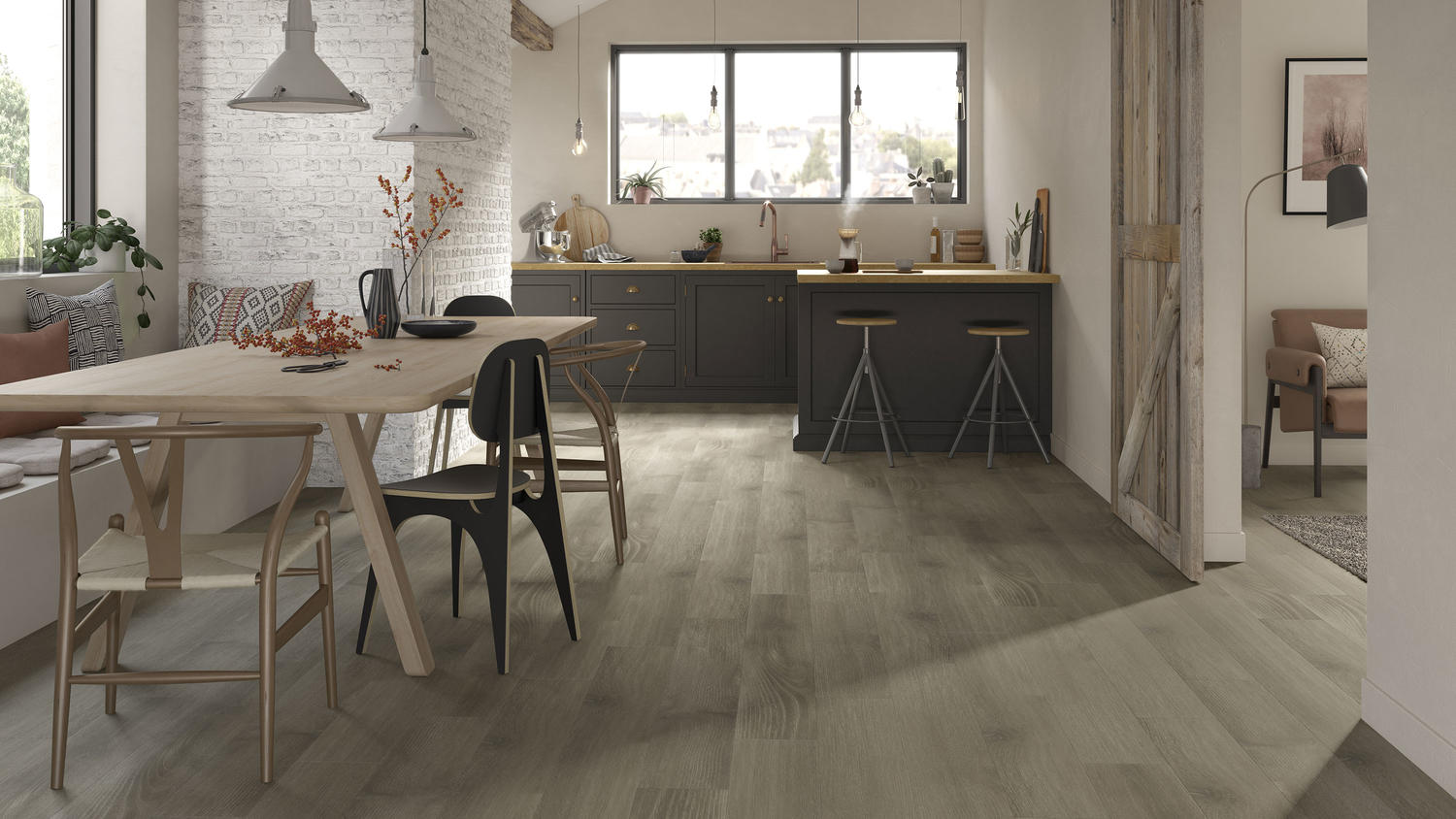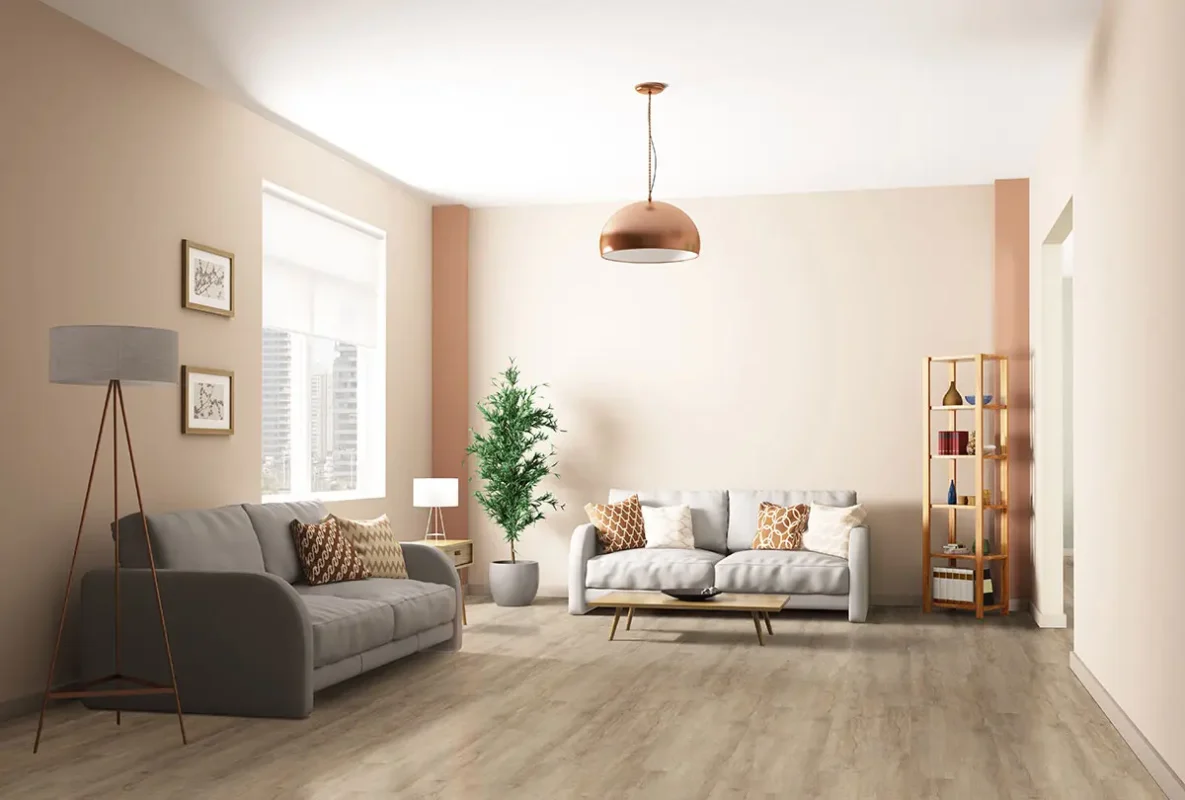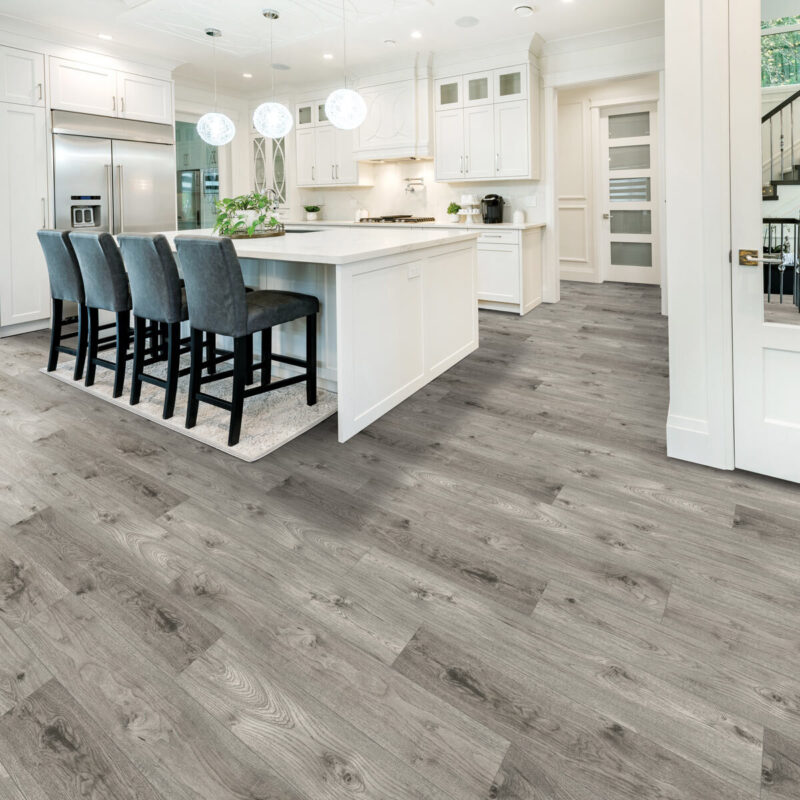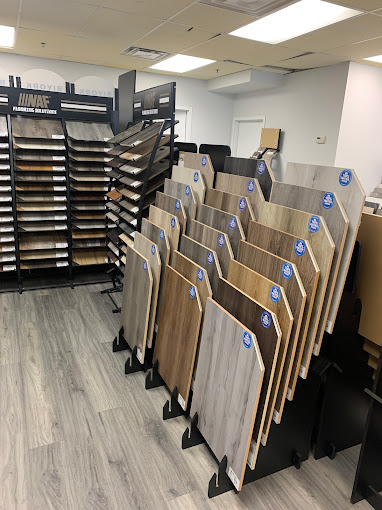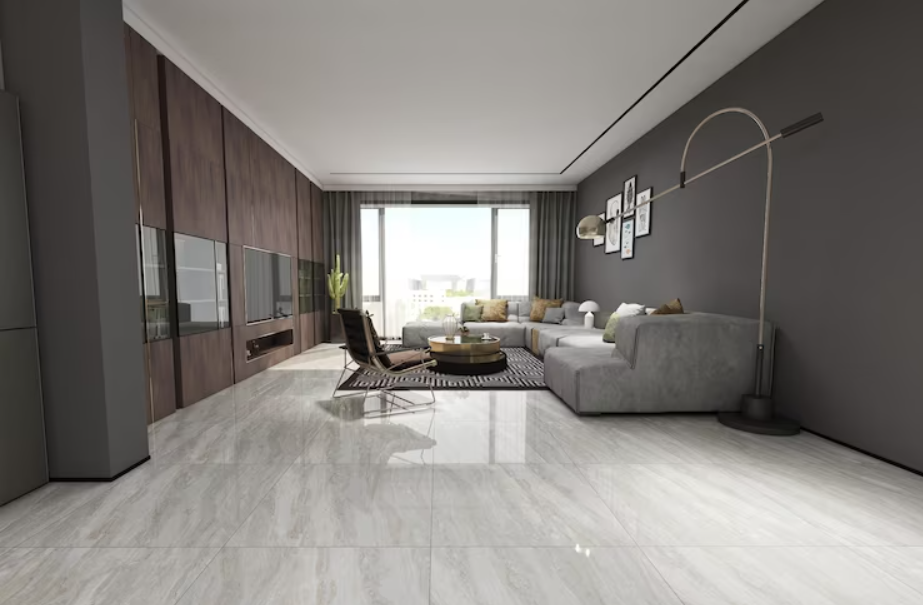Vinyl flooring and luxury vinyl flooring (LVF) are two popular options in the realm of flooring materials, each with its own set of characteristics, advantages, and applications. While they share some similarities, they also have distinct differences that set them apart in terms of durability, appearance, installation, and maintenance. In this comprehensive guide, we’ll delve into the difference between vinyl flooring and luxury vinyl flooring, exploring their composition, features, pros and cons, installation methods, cost considerations, and more.
Composition and Construction
Vinyl flooring, also known as resilient flooring, is made primarily of PVC (polyvinyl chloride), calcium carbonate, plasticizers, and other additives. These materials are compressed and heated to create solid sheets or tiles. Vinyl flooring comes in various forms, including sheet vinyl, vinyl tiles, and vinyl planks. Sheet vinyl is typically available in rolls and is best suited for larger areas with minimal seams. Vinyl tiles and planks, on the other hand, are individual pieces that mimic the look of natural materials like wood, stone, or ceramic.
Luxury vinyl flooring, as the name suggests, is a high-end version of traditional vinyl flooring. It is constructed using multiple layers, each serving a specific purpose to enhance performance and aesthetics. The layers typically include:
- Wear Layer: This topmost layer is responsible for protecting the floor from scratches, stains, and wear and tear. It is usually made of clear PVC or urethane with added additives for enhanced durability.
- Design Layer: Beneath the wear layer lies the design layer, which features a high-definition printed image that replicates the look of natural materials such as hardwood, stone, or tile. Advanced printing technologies allow for intricate patterns and realistic textures.
- Core Layer: The core layer provides stability and dimensional strength to the flooring. It is commonly made of PVC or a composite material that resists moisture and indentation.
- Backing Layer: The bottom layer, or backing, adds stability and moisture resistance to the flooring. It may have additional features such as sound insulation or cushioning.
The layered construction of luxury vinyl flooring contributes to its superior performance and aesthetics compared to traditional vinyl flooring.
Appearance and Design Options
Both vinyl flooring and luxury vinyl flooring offer a wide range of design options to suit various preferences and interior styles. Vinyl flooring is available in an array of colors, patterns, and textures, including wood grain, stone look, and geometric designs. It can replicate the authentic look of hardwood, ceramic tile, or natural stone at a fraction of the cost.
Luxury vinyl flooring takes design realism to the next level with advanced printing technologies and embossing techniques. The high-definition images and textured surfaces closely mimic the look and feel of genuine hardwood, stone, or tile. Luxury vinyl planks often feature beveled edges and authentic wood grain patterns for a more realistic appearance.
Additionally, luxury vinyl flooring offers greater versatility in terms of plank size, shape, and installation patterns. Some manufacturers offer extra-long or wide planks, as well as unique shapes like hexagon or chevrons, allowing for creative design possibilities.
Durability and Performance
One of the key differences between vinyl flooring and luxury vinyl flooring lies in its durability and performance characteristics. While both are considered resilient flooring options, luxury vinyl flooring generally offers superior durability and longevity.
Vinyl flooring is known for its resilience and resistance to scratches, stains, and water damage, making it suitable for high-traffic areas such as kitchens, bathrooms, and entryways. However, it may be more prone to denting and puncturing compared to luxury vinyl flooring, especially in areas with heavy furniture or sharp objects.
Luxury vinyl flooring, with its multi-layered construction and enhanced wear layer, provides enhanced durability and resistance to wear and tear. It is more resistant to scratches, dents, and stains than traditional vinyl flooring, making it ideal for both residential and commercial applications. Additionally, luxury vinyl flooring is highly resilient to moisture, making it suitable for areas prone to spills or humidity, such as basements and bathrooms.
Furthermore, luxury vinyl flooring is often backed by extensive warranties, ranging from 10 to 30 years or more, depending on the manufacturer and product line. These warranties provide peace of mind and assurance of the flooring’s long-term performance.
Installation Methods
Both vinyl flooring and luxury vinyl flooring offer versatile installation options to accommodate different needs and preferences. However, there are some differences in the installation processes and requirements.
Vinyl flooring, particularly sheet vinyl, is typically installed using a full-spread adhesive or a perimeter-bond adhesive. The adhesive is applied to the subfloor, and the vinyl sheet is rolled out and firmly pressed into place. For vinyl tiles and planks, the most common installation methods include peel-and-stick, glue-down, or floating installation.
Luxury vinyl flooring also offers a variety of installation methods, including glue-down, loose-lay, and click-lock (floating) installation. Glue-down installation involves applying adhesive to the subfloor and affixing the vinyl planks or tiles directly to the surface. Loose-lay installation involves laying the flooring without adhesive, relying on its weight and perimeter adhesive strips for stability. Click-lock installation, similar to laminate flooring, allows the planks to interlock securely without the need for adhesive.
The choice of installation method may depend on factors such as subfloor condition, room size, and personal preference. Glue-down installation is typically recommended for high-moisture areas or commercial settings, while click-lock installation offers ease and convenience for DIY enthusiasts.
Maintenance and Care
Both vinyl flooring and luxury vinyl flooring are relatively easy to maintain and require minimal upkeep compared to natural materials like hardwood or stone. However, there are some differences in their maintenance requirements and recommended care practices.
Vinyl flooring can be cleaned with a damp mop or mild detergent solution to remove dirt, stains, and spills. Routine sweeping or vacuuming helps prevent dirt and debris from accumulating on the surface. While vinyl flooring is water-resistant, excessive moisture should be avoided to prevent damage to the adhesive or subfloor.
Luxury vinyl flooring shares similar maintenance requirements, but its enhanced durability and protective wear layer make it even more resistant to stains and scratches. In most cases, regular sweeping or dry mopping is sufficient to keep luxury vinyl flooring looking clean and pristine. Occasional damp mopping with a pH-neutral cleaner is recommended for deeper cleaning.
It’s important to avoid harsh chemicals, abrasive cleaners, or wax-based products, as they can damage the wear layer and diminish the flooring’s appearance over time. Additionally, furniture pads or felt protectors should be used to prevent scratching or indentation from heavy furniture.
Cost Considerations
Cost is often a significant factor when choosing flooring materials, and both vinyl flooring and luxury vinyl flooring offer cost-effective options compared to natural materials like hardwood or stone.
Vinyl flooring is generally more affordable than luxury vinyl flooring, making it an attractive choice for budget-conscious homeowners or commercial projects with large surface areas to cover. The cost of vinyl flooring depends on factors such as quality, thickness, design complexity, and installation method. Sheet vinyl is typically the most economical option, while vinyl tiles and planks may vary in price depending on their design and construction.
Luxury vinyl flooring is priced slightly higher than traditional vinyl flooring due to its advanced construction, enhanced durability, and realistic aesthetics. However, the long-term value and performance benefits of luxury vinyl flooring often justify the initial investment. Higher-end luxury vinyl products may offer additional features such as enhanced acoustic properties, antimicrobial treatments, or premium warranties, which can contribute to their overall cost.
When comparing costs between vinyl flooring and luxury vinyl flooring, it’s essential to consider the total cost of ownership, including installation, maintenance, and potential replacement or repair expenses over the lifespan of the flooring.
Environmental Impact
Environmental sustainability is becoming increasingly important in the flooring industry, prompting manufacturers to develop eco-friendly alternatives and production processes.
Vinyl flooring, particularly traditional vinyl, has raised concerns about environmental impact due to its reliance on PVC, a petroleum-based plastic, and the use of plasticizers and other additives. Additionally, the manufacturing process of vinyl flooring may involve the emission of volatile organic compounds (VOCs), which can contribute to indoor air pollution.
However, advancements in vinyl flooring technology have led to the development of more eco-friendly options, such as phthalate-free vinyl and products certified by third-party organizations for low VOC emissions.
Luxury vinyl flooring also faces similar environmental challenges associated with PVC-based materials. However, some manufacturers have taken steps to improve the sustainability of their products by using recycled materials, reducing energy consumption during production, and implementing eco-friendly practices throughout the supply chain.
In recent years, there has been a growing demand for alternative flooring materials that offer sustainability benefits without compromising performance or aesthetics. As a result, the market has seen an increase in options such as cork, bamboo, linoleum, and engineered hardwood, which appeal to environmentally conscious consumers.
Conclusion
Vinyl flooring and luxury vinyl flooring are versatile, durable, and cost-effective options for residential and commercial applications. While they share some similarities, such as ease of maintenance and wide design choices, there are distinct differences in their construction, performance, and environmental impact.
Vinyl flooring, with its affordable price point and resilient properties, is suitable for budget-conscious consumers seeking a practical flooring solution for high-traffic areas. Luxury vinyl flooring, on the other hand, offers enhanced durability, realism, and design versatility, making it a popular choice for those who prioritize aesthetics and long-term performance.
Ultimately, the difference between vinyl flooring and luxury vinyl flooring depends on factors such as budget, design preferences, installation requirements, and sustainability considerations. By weighing the pros and cons of each option and consulting with flooring professionals, homeowners, and business owners can select the right flooring solution to meet their needs and enhance their living or working spaces.


